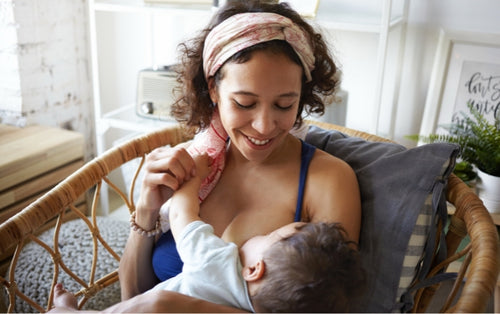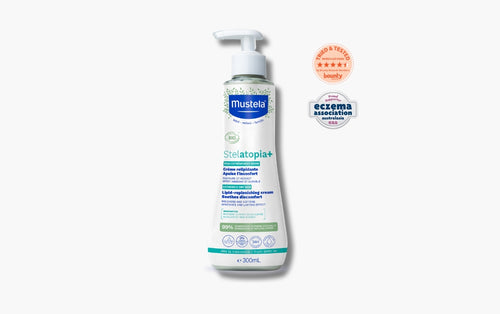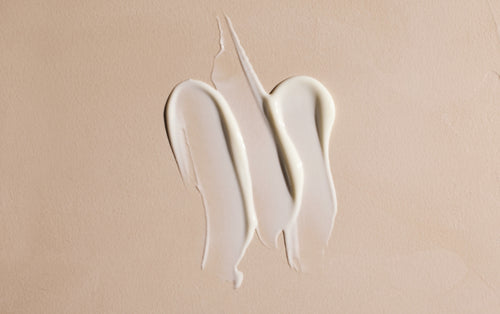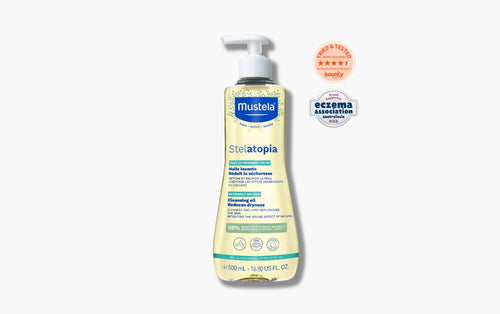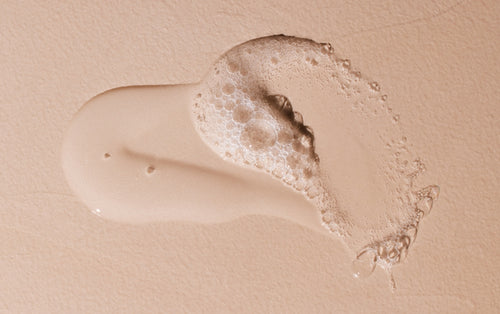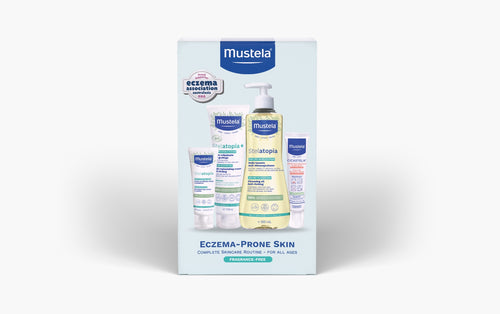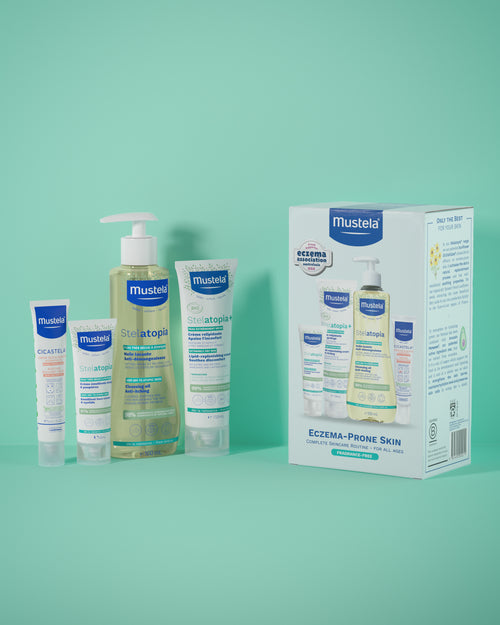What is nappy rash?
Here's a list of telltale signs that you can identify:
- Baby's bottom is red, irritated and sensitive (you might see rashes and/or red patches)
- Baby's bottom is pink to fiery red, and these patches form W or Y shapes covering the inside of the thighs, buttocks, and genitals (skin folds are usually exempt from it)
- Your baby is suddenly upset at night and/or cries when you change the nappy.
- Some of these signs seem right, but you are still unsure what affects your baby.
Why is the baby's skin easily irritated?
Nappy rash is a very frequent skin condition in babies. Between 3 and 20 months, 50% of babies will have had such irritations. Find comfort in knowing that you are not alone out there!
The nappy rash occurs due to irritation from nappy friction and macerations of stools and urine.
It's been observed that nappy rash occurs generally between 6 and 12 months. That's when your baby starts to sit upright, and friction between skin and nappy is at an all-time high!
Apart from that, nappy rash can be caused by teething, fever, diarrhoea, or changes in the baby's diet.
It is excruciating for babies, but if taken care of early enough, it can be soothed rapidly.
How to get rid of nappy rash?
Quick actions to soothe the skin will ensure that the rash will go away rapidly - often in a matter of days!
To achieve this, your baby's bottom needs to breathe a lot, and you need to soothe these red patches
Keep baby's bottom clean and dry
The essential step in preventing and treating a rash is keeping your baby's nappy area dry and clean. When changing the nappy, use a soft cloth or squirt water from a bottle to clean the area gently. It's okay to use baby wipes but handle them with care.
Avoid rubbing the skin too hard, and refrain from using wipes containing alcohol. Mustela's Eco-wipes are made of 100% certified GOTS* organic cotton, so you can have a zero-waste cleansing routine. Our wipes are also reusable and washable.
Additionally, it can be beneficial to allow your baby to go nappy-free for some time. To create a nappy-free zone, you can place towels or disposable waterproof pads down.
Change nappies often
It's best to change your child's nappy as soon as possible. Even a small amount of trapped moisture can irritate the skin and cause a nappy rash. Therefore, changing slightly wet nappies right away is recommended, especially if your child has an active nappy rash.
Switch to disposable nappies
While cloth nappies have several benefits, they may not be the most suitable option when your child has a nappy rash. Switching to super-absorbent disposable nappies can be helpful until the rash heals. These diapers can keep your child dry and promote faster healing.
Check the size of your child's nappy.
Wearing a nappy that's too small can increase the likelihood of developing a rash and hinder the healing process of the rash on the bottom. On the other hand, a diaper that's too big can cause friction and irritation, worsening your baby's nappy rash.
Check your baby's current diaper size and consider switching to a different size if necessary.
Nappy rash treatment
Barrier or nappy creams can be applied to the skin to protect it from moisture, friction, and irritants. When it comes to nappy rash, using a barrier cream can offer several benefits, including:
- Preventing further irritation: Barrier creams or ointments create a protective layer for your baby's skin and the nappy, reducing the risk of additional irritation from moisture and friction.
- Soothing the skin: Many barrier creams contain ingredients such as zinc oxide that can soothe the skin and relieve discomfort. Mustela Vitamin barrier cream contains a complex of patented natural active ingredients which guarantees a triple effect on nappy area skin discomfort and irritation - in any circumstance, even during diarrhoea and teething.
- Promoting healing: Barrier creams can help promote the healing of the rash and prevent it from getting worse by protecting the skin and reducing further irritation.
- Preventing infection: In some cases, nappy rash can become infected with bacteria or yeast. Barrier creams can help prevent this by creating a barrier that prevents these organisms from entering the skin.
- Keeping the skin moisturised: Some barrier creams contain ingredients that can help moisturise. This can be especially helpful for your baby with dry or sensitive skin. It is always best to avoid products that can harm your little bundle of joy, like hydrocortisone. Opt to treat your baby's skin with natural, baby-safe products whenever possible.
How to apply nappy rash cream?
Apply a layer of nappy rash cream to the affected area. Make sure to cover the rash entirely and apply the cream generously. Using a cream designed explicitly for nappy rash is essential, as some other lotions or creams contain ingredients that may further irritate the skin.
What to do to avoid recurring bottom rashes?
Prevention is better than cure. Here are a few tips to avoid slight redness going bad:
- As a rule of thumb, change the baby's nappy as soon as it is soiled with stools or urine.
- Always check that baby's skin is dry before fastening the nappy (always pat and not rub)
- Protect as often as possible baby's skin with a fragrance-free cream before putting on a fresh nappy (and especially those little skin folds)
- Thoroughly wash your hands before and after changing nappies.
Now that you know all about nappy rash, your baby's bottom will soon be as soft as can be, and you will be a relaxed parent.
Always seek medical advice if the condition remains unchanged after one week or if oozing discharge from the rash occurs at any stage.

